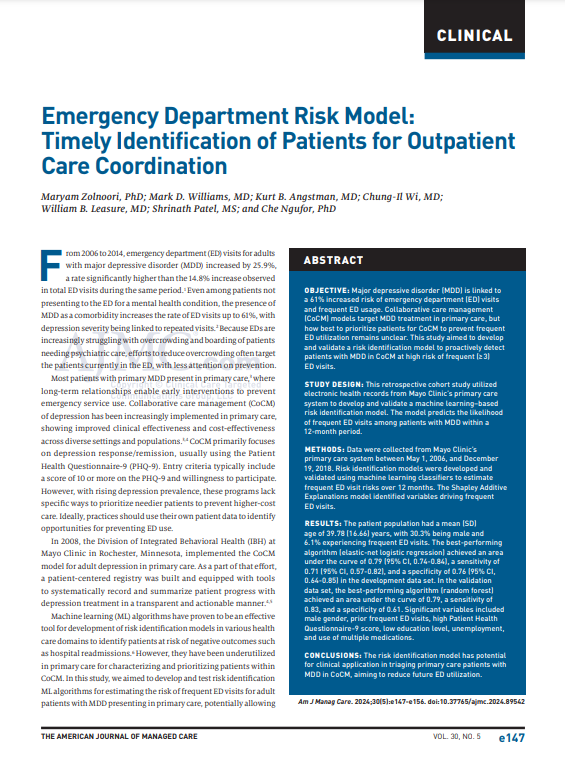Headline
A machine learning model helped identify primary care patients with major depression who are at high risk of frequent emergency department use and might benefit from collaborative care management.
Context
Major depressive disorder (MDD) is associated with frequent emergency department (ED) use. Collaborative care management (CoCM) is an intervention used in primary and other care settings that has been shown to reduce depression, but less is known on prioritizing patients for CoCM at higher risk of frequent ED use. Machine learning, a subfield of artificial intelligence that can analyze large data sets without programming, can identify patients at risk for negative health outcomes. This study validated a machine learning-based risk model for identifying patients with MDD for primary care-based CoCM who are at higher risk for frequent ED visits.
Findings
Three machine learning algorithms were used to predict ED visit frequency amongst adult MDD patients in Mayo Clinic’s multi-state, integrated health primary care system. Several variables were included in the algorithm, including demographics, number of medications, and comorbidities. Patients at higher risk of three or more ED visits in a 12-month period had histories of frequent ED visits, chronic conditions, high PHQ-9 scores (including the question on suicide ideation), and who are Black. Protective factors included higher education levels and being employed and married. Age and co-occurring alcohol use disorder were not associated with higher ED use.
Takeaways
Primary care providers can explore using machine learning-based risk identification models to prioritize CoCM for patients with MDD at high risk of frequent ED use. By targeting CoCM for these patients, there is potential to improve health outcomes and reduce health care costs by reducing ED visits.

